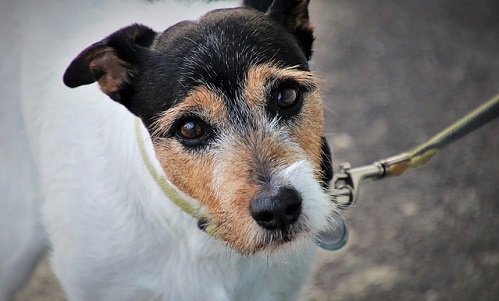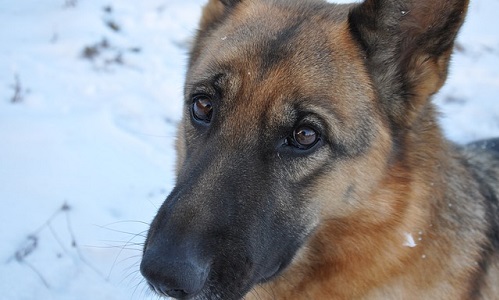True dog lovers have something touching and very important in common: they’d move heaven and earth for the well-being of their canine companions. Statistics agree: a 2017-2018 report by the American Medical Veterinary Association found that dog owners made an average of three trips to their respective vet annually. This means that dog owners are more likely to seek out professional help in the event they notice something “off” about their four-legged friend; looking for important red flags and symptoms first is an important part of the process.
Many owners of elderly and sick dogs have wondered when it was the right time to “call in the troops” and take their dog to a vet. They often worry about the same things you are right now, such as:
- How sick can a dog be before it’s serious?
- Why is your dog suddenly aggressive or confused?
- Your dog isn’t eating/sleeping/drinking as much as he should be; is something wrong?
- Why is your dog moving or acting in an unusual way?
While a vet visit is an excellent preventative and curative tool, it’s understandable if financial concerns put a damper on things – specially-trained vets and tests can be expensive. That’s why it’s important to know the facts and symptoms of a dog brain tumor so you can make the right choice for your dog’s comfort and safety.
Do All Dogs Get Brain Tumors?
There’s no single cause of brain tumors in dogs – just like humans, it’s random and unexpected when it appears, and can lurk without showing obvious symptoms for long periods of time. Some veterinary medical experts have found certain breeds are more susceptible to certain types of brain tumors. Notably, long-nosed dogs like Collies have more instances of brain membrane tumors called meningiomas, while flat-faced dogs like Boxers tend to have more interstitial brain tissue tumors, called gliomas. In all cases, the older a dog gets, the higher their risk of developing a tumor is – the risks start to climb in percentage after 5 years of age.
 While there’s no foolproof way to “tumor-proof” a dog, general healthy behaviors such as a balanced diet, high-quality supplements, and plenty of exercise are the best way to keep a dog in great shape, even as they start to grow a little grey around the muzzle. If you’ve been providing your four-footed companion with these benefits and still notice troubling symptoms, there’s a potential that he may have developed a canine brain tumor.
While there’s no foolproof way to “tumor-proof” a dog, general healthy behaviors such as a balanced diet, high-quality supplements, and plenty of exercise are the best way to keep a dog in great shape, even as they start to grow a little grey around the muzzle. If you’ve been providing your four-footed companion with these benefits and still notice troubling symptoms, there’s a potential that he may have developed a canine brain tumor.
Dog Brain Tumor Symptoms
Much like brain tumors in human beings, the way your dog is acting is usually the first sign that something may be wrong – a difference in the way he’s acting, to be exact. If your normally sweet and cuddly dog is suddenly short-tempered and aggressive without cause, a tumor may be to blame. If your dog is listing to the right or left and seems to be asymmetrical (i.e., leaning or stumbling when he tries to move,) it could indicate that a tumor is pressing on or stressing part of his brain used for movement. Confusion and weakness, particularly favoring one side of the body, are other key signs to watch for.
Remember: dogs may become sick from ingesting certain foods or poisons – everything from pieces of their favorite dog toys to animal excrement found in their environment. The result would be a dog that may look like he’s suffering from a tumor, but really just has a stomach ache or infection. As your dog’s owner and companion, it’s your job to rule out common potential causes in your mutual environment, such as bad food left out and later eaten by your pooch. If you can reliably account for your dog’s whereabouts and know he hasn’t had access to anything obvious that can hurt him, it’s time to take a more detailed look at his behavior.
While these simple tests and questions are by no means comprehensive, using them as a guide will help you communicate more effectively with your dog’s vet. They can help narrow down a diagnosis faster and more easily, ultimately providing your dog relief more quickly. For the best results, keep dated notes on your dog’s symptoms in a notebook to offer during your next vet visit – it’s important for them to know what’s happening and how often it’s happening. Below, a helpful list of tests and observations you can execute at home in order to determine your dog’s condition, as well as next steps to take:
Testing Physical Symptoms
Give your dog a treat and have him sit or lie down in front of you.
- When you look at his eyes, is one pupil noticeably larger than the other?
- Does your dog seem to have any trouble seeing you, particularly close up?
- Is your dog panting or having breathing trouble, even at rest?
- Has your dog had seizures – typically presenting as falling to the ground and moving limbs or head in short, jerky, and uncontrolled movements?
Any visible or movement-based issues like these are red flags, but if there are additional “yes” answers from the other categories below, it’s important to make a vet appointment as soon as possible for evaluation.
Testing Movement Symptoms
Bring your dog outside or in a room with a lot of space, ideally off their leash. Toss a favorite toy or ball in a straight line away from you to watch the way they move.
- Does your dog stagger or seem “drunk” as he walks or run?
- Does your dog struggle to walk at all, despite no physical injuries?
- Does your dog seem cognitively impaired, or confused about what’s going on?
- Is he turning in constant circles, even when he isn’t chasing something?
 When your dog has moved or chased a toy far away from you, it’s a good time to test his hearing – the loss of which can be another brain tumor sign. Call him while looking away from him and don’t gesture at him – the idea is to avoid giving any visual cues in order to test his hearing. Call him in the softest voice you think they’d be able to normally hear, and increase volume gradually – do you notice him seemingly ignoring you or failing to come back with his usual speed? Take note of your observations to discuss with your vet.
When your dog has moved or chased a toy far away from you, it’s a good time to test his hearing – the loss of which can be another brain tumor sign. Call him while looking away from him and don’t gesture at him – the idea is to avoid giving any visual cues in order to test his hearing. Call him in the softest voice you think they’d be able to normally hear, and increase volume gradually – do you notice him seemingly ignoring you or failing to come back with his usual speed? Take note of your observations to discuss with your vet.
Testing Behavioral Symptoms
Make it a point to watch your dog closely in the home for the next few days or weeks, particularly the way he acts when he is not directly engaged with you.
- Does your dog seem to get confused or “lost” walking around your familiar home?
- Is he suddenly not getting along with other pets, children, or even you?
- Does he seem overly tired or uninterested in activities and exploration they usually love?
- Is he startled easily when typical movement or sounds are nearby?
- Has he had a lot of uncharacteristic “accidents” in the house recently?
- Has your dog’s appetite increased or decreased dramatically?
Just as they can have a sudden and substantial impact on the way humans behave and interact with one another, dogs can act very different when they have a brain tumor. It can be very hard to watch a beloved member of the family as they deal with the symptoms of a brain tumor, but dogs are resilient creatures, and a diagnosis is the first step to treatment, or even a cure. If your dog has gotten snappish and aggressive with no other discernible cause, it may be because of a brain tumor, and it may – thankfully – also be treatable.
Diagnosing a Dog Brain Tumor
The best and most accurate way to determine if your dog has a brain tumor or any other canine tumor for that matter is to take him to the nearest vet. Not only will a vet be able to determine if a brain tumor is to blame for your dog’s symptoms, they’ll also be able to diagnose other issues if a tumor isn’t found.
At the veterinary office, they will likely perform some standard tests to help highlight the cause of your dog’s illness, including:
- A physical exam, which will incorporate practices like comparing pupil sizes, testing limb reflexes, sight, and hearing for cognitive dysfunction.
- Bloodwork, which will test aspects like your dog’s red and white blood cell count, as well as determining if there are common canine bacterial infections present.
- Chest X-rays, which will be used to look for the presence of additional tumors, as well as if any tumors present have spread to areas that could complicate treatment, health, or comfort.
- A more thorough internal test, such as a CT scan or an MRI, which will typically require your dog to be placed under sedation. (A vet won’t usually order this test unless they really feel it’s necessary, as general anesthesia carries risks of its own for dogs.)
What Do I Do if My Dog Has a Brain Tumor?
 Naturally, no pet owner wants to hear the news that something serious is wrong with their beloved companion. It may instantly bring up feelings of anxiety and panic – worry for your pet, worry about the cost, and worry about your options.
Naturally, no pet owner wants to hear the news that something serious is wrong with their beloved companion. It may instantly bring up feelings of anxiety and panic – worry for your pet, worry about the cost, and worry about your options.
- Take a breath: If you get a dog brain tumor diagnosis, the most important thing to do is slow down while you process the information. Don’t make any hasty decisions unless your dog is in immediate and severe pain.
- Listen to the experts: Your vet, and potentially your veterinary oncologist as well, are ready and willing to discuss every aspect of the problem and potential solutions with you. Listen carefully to what they tell you about your dog’s condition, particularly about the type of brain tumor affecting your dog. Ask if you will need to alter feeding times, diet, exercise, and so on for your dog as they heal or manage with their brain tumor.
- Use help to process: If you’re feeling a little shell-shocked, use a recording app on your smartphone so you can replay your discussion with your vet later. Grief and concern can cause even the most attentive dog parent to miss important points just after a diagnosis, and a recording app will reliably keep all that information handy – just don’t forget to tell the vet you’re recording them beforehand!
- Ask about symptomatic medication: Medication can vastly improve your dog’s quality of life, particularly if they are in pain, discomfort, or suffering from seizures due to the brain tumor. Be sure to confirm which medications should be taken with food, and if there are any adverse reactions you should be aware of.
- Discuss your budget and abilities: This is a big concern for a lot of pet parents, but talking about it doesn’t make you any less loving or caring – it’s simply a reality of pet medical care. Ask for “ballpark” ranges of cost for the solutions your vet suggests, and ask what you should do for periodic care, such as daily shots or pills, if you work away from the home.
- Make sure your family knows: Other family members living with your dog should, provided it’s age-appropriate, be informed about your dog’s condition. This will signal them to look out for additional symptoms and help you keep a watchful eye on your pup. This includes other furry family members too – you may need to limit playtime or interaction with rambunctious dogs and cats in order to avoid overwhelming your brain tumor-diagnosed pup.
Just remember, the life expectancy of a dog with a brain tumor will vary from a case by case basis. Your dog is a beloved member of the family, and just like any family member falling ill, it’s up to you to make sure they’re getting the best medical care possible to get “back up on their paws.” While brain tumors in dogs sound scary – and yes, it is a very serious diagnosis – there are still options for comfort and treatment that will help your pooch feel just like his old self.
If you notice your faithful companion isn’t acting or feeling like themselves, give your vet a call and make an appointment: the sooner you get a dog brain tumor diagnosis or denial, the sooner your four-legged friend can get back to feeling healthy and happy.
Sources
- San Filippo, Michael. “AVMA releases latest stats on pet ownership and veterinary care.” AVMA.org (American Veterinary Medical Association), November 19, 2018, https://www.avma.org/News/PressRoom/Pages/AVMA-releases-latest-stats-on-pet-ownership-and-veterinary-care.aspx. Accessed December 27, 2018.
- “Brain Tumors in Dogs.” PetMD.com, (no publish date), https://www.petmd.com/dog/conditions/cancer/c_multi_brain_tumors. Accessed December 27, 2018.
- “Genes found linking flat-faced dog breeds to brain cancer.” Irish Examiner.com, May 12, 2016, https://www.irishexaminer.com/breakingnews/world/genes-found-linking-flat-faced-dog-breeds-to-brain-cancer-735079.html. Accessed December 27, 2018.




